What do you know about
T. REX?
Take this 10 question quiz to test your knowledge of Tyrannosaurus rex, the ultimate predator!
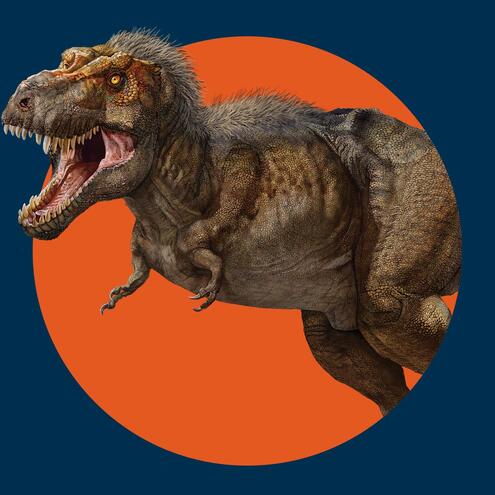
What does the name “Tyrannosaurus rex” mean?
fearsome predator reptile
fire dragon king
large-headed lizard
tyrant lizard king
ANSWER: tyrant lizard king
Tyrannosaurus rex was the top predator in its ecosystem. With its huge size, sharp claws, and bone-crushing bite, it dominated the competition. No wonder its name means the tyrant lizard king!
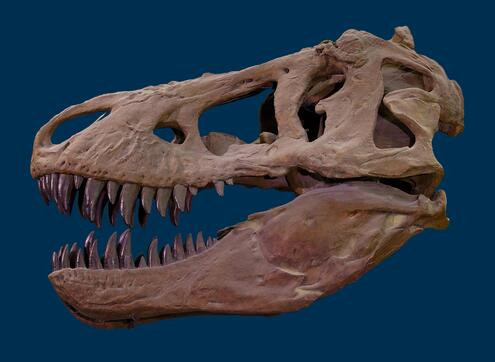
How did its teeth help make T. rex such an efficient killer?
With more than half of each tooth embedded in its jawbone, T. rex could withstand immense bending forces during a bite.
Teeth of T. rex were semi-blunt, thick, and almost round, making them very hard to break.
T. rex was always growing new teeth to replace any broken or damaged ones.
all of the above
ANSWER: all of the above
A T. rex bite was powerful enough to crush bone. It could bite with about 34,000 newtons of force, like being crushed under the weight of three cars. No known animal, extinct or alive, can bite with such force.
More than a hundred years ago, a paleontologist from the American Museum of Natural History discovered a new species of dinosaur: Tyrannosaurus rex. Who found the fossil, and where?
Luis Alvarez in Patagonia, Argentina
Barnum Brown in Hell Creek, Montana, U.S.A.
Mary Anning in Dorset, England
Dong Zhiming in the Gobi Desert, northwestern China
ANSWER: Barnum Brown in Hell Creek, Montana, U.S.A.
Barnum Brown described excavating the T. rex fossils as “hot dirty work with the thermometer ranging up to 110° Fahrenheit without any shade.” He and his team found a total of three T. rex individuals in the early 1900s, including two nearly complete skeletons!
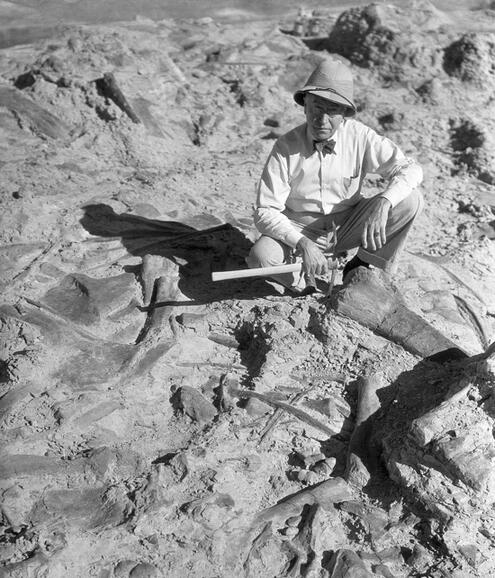
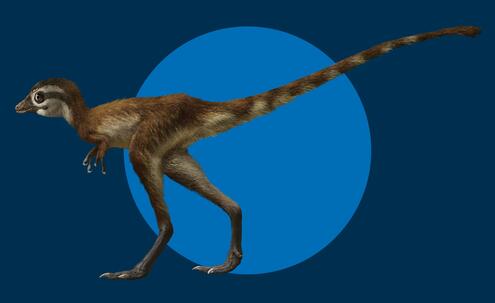
Every fearsome T. rex was once a helpless chick. How big was a newly hatched T. rex?
the size of a pigeon
the size of a chicken
the size of an ostrich
the size of a cow
ANSWER: the size of a chicken
A baby T. rex had very different features than an adult T. rex. It hunted and survived differently too! Its bladelike teeth and light skull were better suited for snatching small prey than for crushing large bones. Its slim, lightweight body and long legs made it quick and agile—useful for avoiding predators.
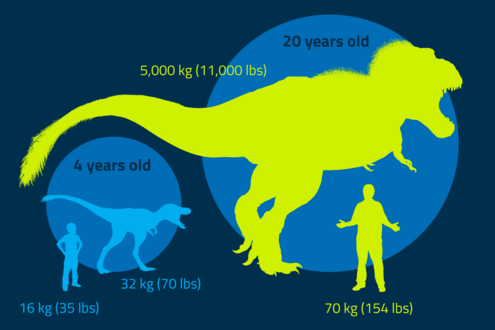
A 4-year-old T. rex is twice as heavy as a 4-year-old human. A 20-year-old T. rex is how many times heaver than a 20-year-old human?
4
17
71
174
ANSWER: 71
T. rex grew much bigger and much faster than humans, gaining up to 2.1 kilograms (4.6 pounds) in just one day! T. rex juveniles were much smaller and weaker than their parents. But they were quick and nimble, enabling them catch smaller, faster prey. Juveniles and adults had different diets and probably lived in different habitats.
What’s the difference between the terms “Tyrannosaurus rex” and “tyrannosaur”?
Tyrannosaurus rex is a kind of tyrannosaur
a tyrannosaur is a kind of Tyrannosaurus rex
nothing; both terms mean the same thing
ANSWER: Tyrannosaurus rex is a kind of tyrannosaur
“Tyrannosaurs” is the name of a group of closely related dinosaurs. This group includes dozens of different kinds of animals, and its biggest and most famous member is Tyrannosaurus rex. Fossils show that tyrannosaurs evolved for over 100 million years, with T. rex appearing during the last two million. Tyrannosaurs lived between about 167 and 66 million years ago. T. rex lived between about 68 and 66 million years ago.
A juvenile T. rex looks very different from an adult. Which of these is a 12-year-old T. rex?
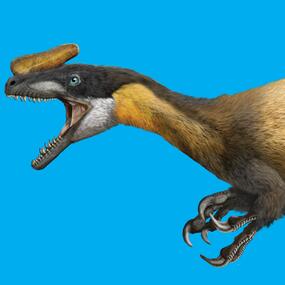
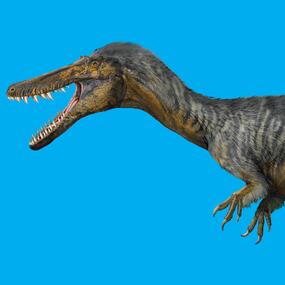
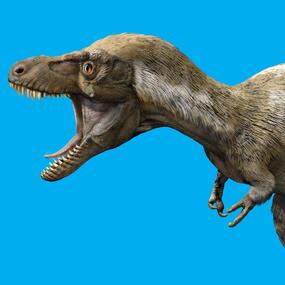
ANSWER:
A juvenile T. rex had more traits in common with adult members of smaller tyrannosaur species than with its own parents. They all had lighter skulls, long legs, and sharp teeth that could tear flesh. Feathers covered most of their bodies, probably for insulation, camouflage, species recognition, or display.
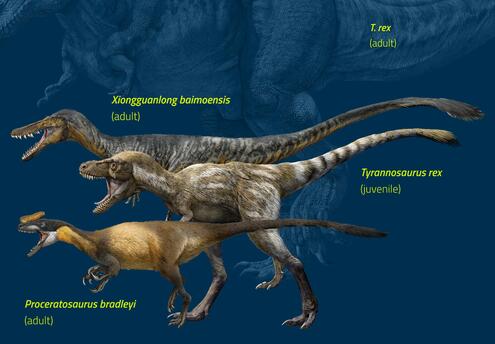
From left to right: Juvenile and adult T. rex, followed by two other tyranosaurs: Proceratosaurus bradleyi and Xiongguanlong baimoensis
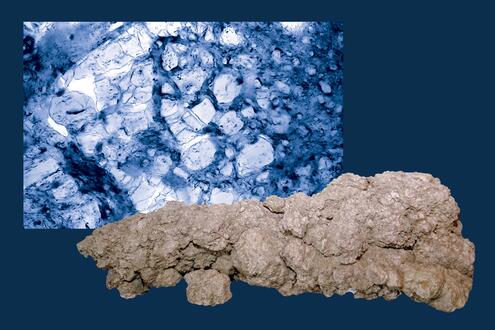
Paleontologists use high-tech tools to study coprolites, or fossilized poop. What meal leftovers can be seen in this CT scan of a T. rex coprolite?
undigested muscle fibers
fish scales
fragments of crushed bone
partially chewed seeds
ANSWER: fragments of crushed bone
Scientists long suspected T. rex could crunch through bones, thanks to its powerful skull and teeth. Now there’s proof in its poop! In fact, crushed bone makes up 30 to 50 percent of this fossil.
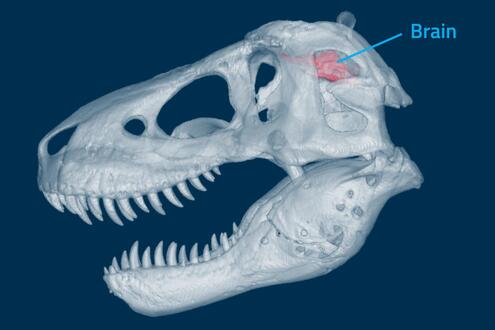
Fossilized skulls can help scientists determine the precise shape and size of a dinosaur’s brain. What does this brain cast of a T. rex tell us about the animal’s senses?
it had a so-so sense of smell
it could see very well
it had poor hearing
it had a sweet tooth
ANSWER: it could see very well
By comparing brain casts of T. rex to the brains of its closest living relatives—birds and crocodilians—scientists can tell that T. rex had excellent vision, hearing, and sense of smell. Other features, like forward-facing eyes, which were the size of oranges, gave this predator superior depth perception and helped it see far into the distance.
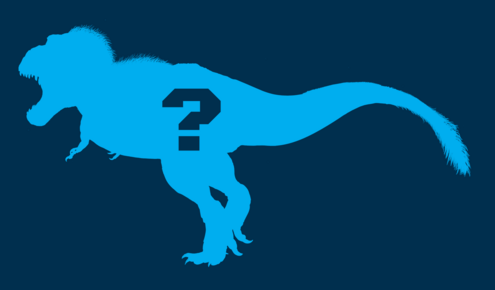
What color was T. rex?
brownish gray
rainbow colored
blood red
Nobody knows!
ANSWER: Nobody knows!
By studying tyrannosaur fossils, scientists think that T. rex was probably covered with scales and feathers. So T. rex could have been as colorful or as drab as its living relatives, like the birds and lizards shown here!
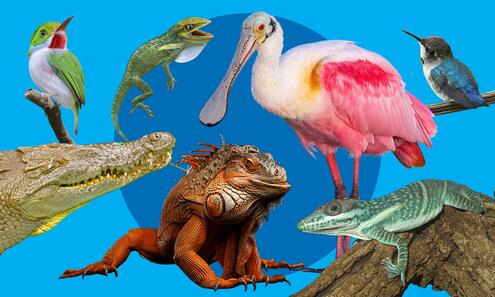




 Biodiversity
Biodiversity
 Brain
Brain
 Genetics
Genetics
 Marine BiOLogy
Marine BiOLogy
 MicrobiOLogy
MicrobiOLogy
 PaleontOLogy
PaleontOLogy
 ZoOLogy
ZoOLogy
 AnthropOLogy
AnthropOLogy
 ArchaeOLogy
ArchaeOLogy
 Astronomy
Astronomy
 Climate Change
Climate Change
 Earth
Earth
 Physics
Physics
 Water
Water
